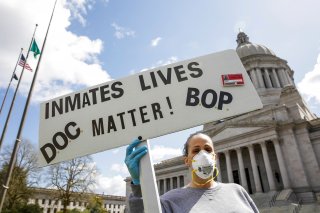Envisioning the New Normal After the Coronavirus Prison Crisis
America must preserve many of the innovations adopted under the duress of the pandemic, which were long overdue.
Also, just as in community supervision, with reentry services it is often possible to do more with less by using risk and needs assessments to focus on those who can most benefit from attention. Among the many important reforms in the landmark First Step Act signed in December 2018 was a change in policy to allow low-risk individuals to be released from federal prison to home confinement instead of a halfway house. Jared Kushner was instrumental in championing the legislation and, ironically, his father Charles Kushner was placed in a halfway house after being locked up for white-collar charges, even though he owns apartment buildings. By combining actuarial assessments and flexibility in release laws, we can avoid such wasteful allocations of precious reentry resources.
If the American criminal justice system was a building, then Americans would still be in the stage of putting out the fire. However, it is already clear through the smoke that the country faces a new normal—by necessity. It must preserve many of the innovations adopted under duress that were long overdue without burning the entire system to the ground. With the right priorities, policymakers can advance the goals of public safety and rehabilitation through a smaller system that better utilizes technology, embraces public and private sector partnerships, and recognizes that public health is inextricably linked to those in its care.
Marc Levin, Esq. is Chief of Policy & Innovation for Right on Crime (www.rightoncrime.com), an initiative of the Texas Public Policy Foundation. Follow @RightonCrime and @MarcALevin.
Image: Reuters

